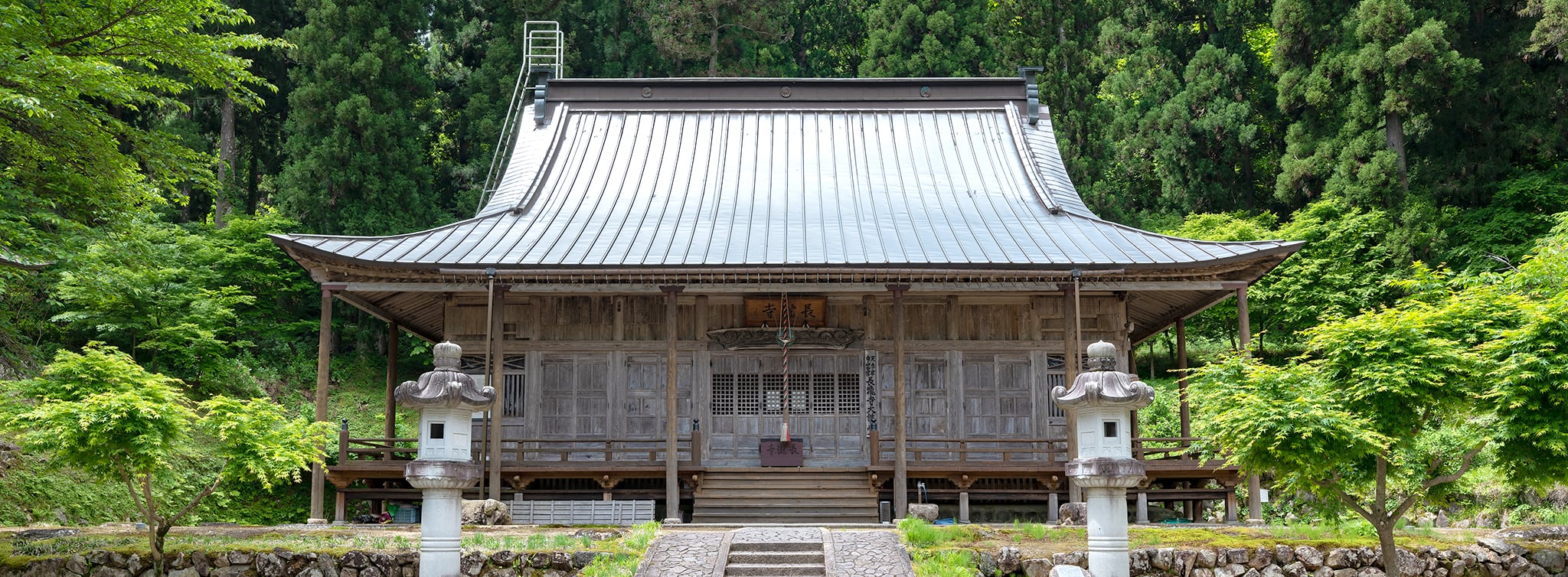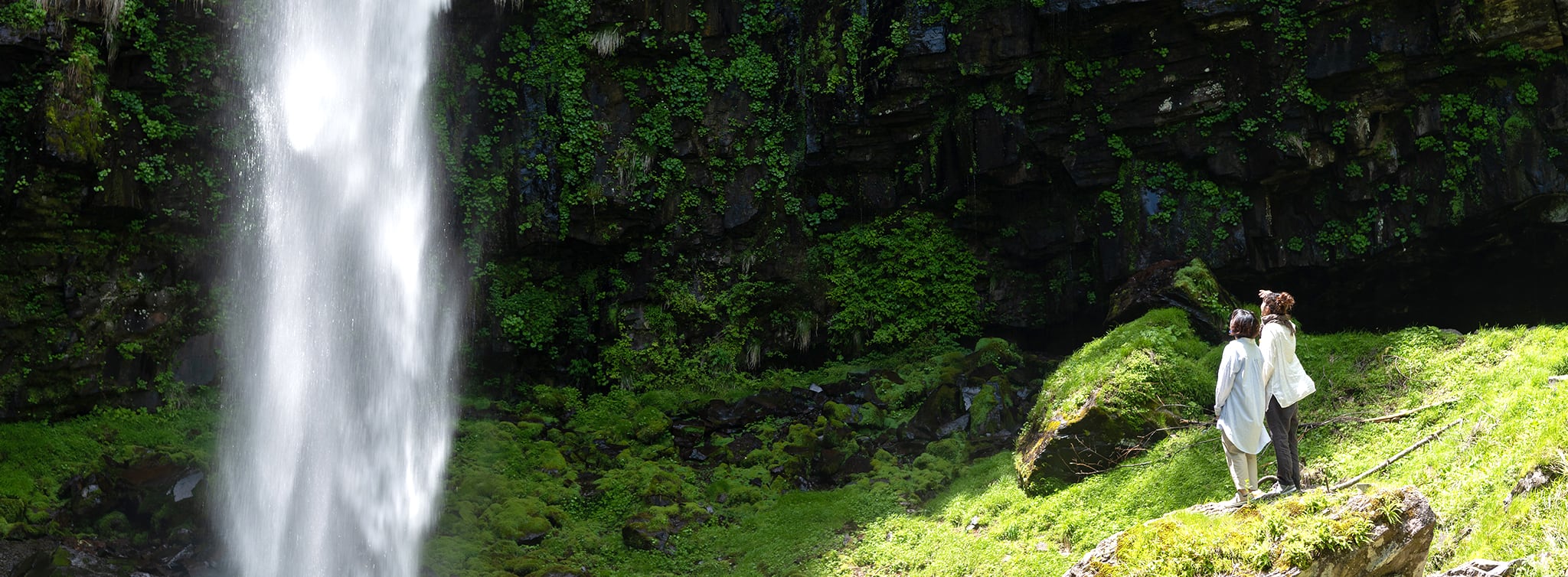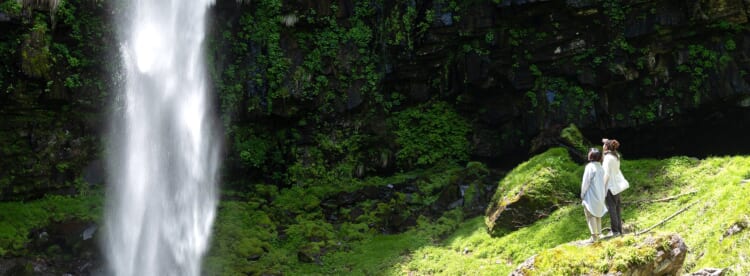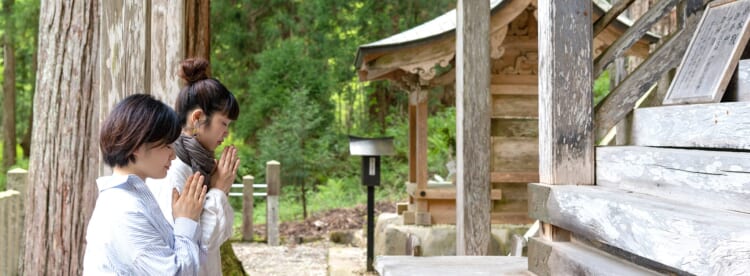Trip to Amidagataki & Hakusan Culture Museum
Natural & Relaxing
A Trip to Visit a Famous Waterfall Amidagataki and Hakusan Culture
Mount Hakusan celebrated its 1300th anniversary of establishment in 2017. Together with Mount Fuji and Mount Tateyama, they are called Three Holy Mountains in Japan. We are going to this spiritual spot surrounded by green forest and clear air. You can recharge your energy and forget your busy daily life when you are visiting the shrines and temples of Hakusan-shinko (Hakusan Faith) and sensing the negative ions in Shirotori area.
 5 min.
5 min.
 15 min.
15 min.
 10 min.
10 min.
 10 min.
10 min.
 10 min.
10 min.
Nagataki Hakusan-jinja Shrine & Hakusan Choryuji Temple
One of the starting points of ascetic path, Minobanba
Sense the sacred atmosphere of mountain faiths
This shrine was established by monk Taicho during the early Nara era (710 – 794). It became very prosperous from Kamakura era (1185 – 1333) to Muromachi era (1336 – 1573), leaving so many Important Cultural Properties of Hakusan-shinko. When you enter through the approach, you can see the main shrine and front shrine together with the stone lanterns which are designated as Important Cultural Property of Japan. Among all Hakusan shrines in Japan, this Nagataki Hakusan-jinja Shrine is the most important one. Mino Zenjodo (Ascetic path) is a base of training spot of the Hakusan-shinko. It is also one of the starting points of ascetic path. Many prayers came to visit during Heian era (794 – 1185) to Muromachi era. It was originally named as Hakusan Chuguji Temple in the past. It was renamed due to the separation of Buddhism and Shintoism. You can see the statues of Gods and Buddhas inside the treasure hall.
* Snow around the shrine is deep in winter. Please do not drive with normal tire.
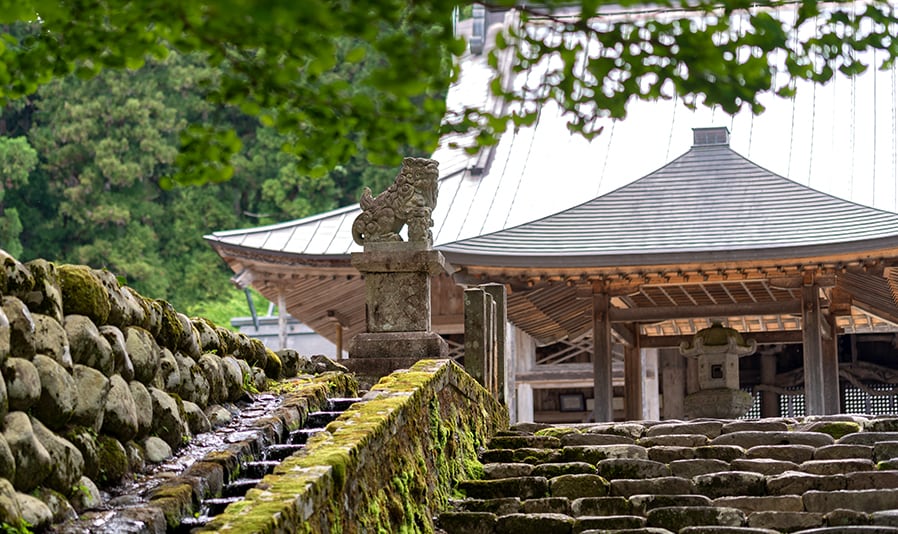
Beautiful greenery inside the area.
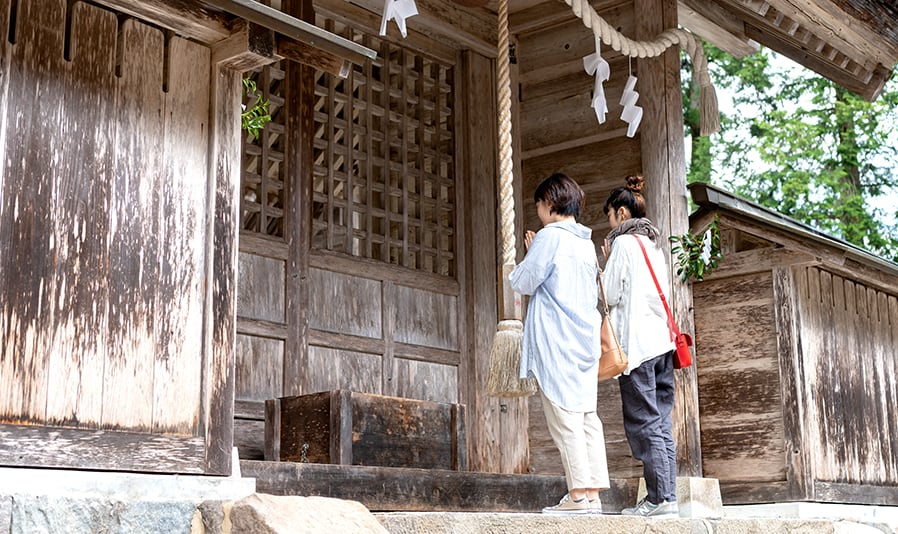
You can see 5 halls surrounded by the long gate.
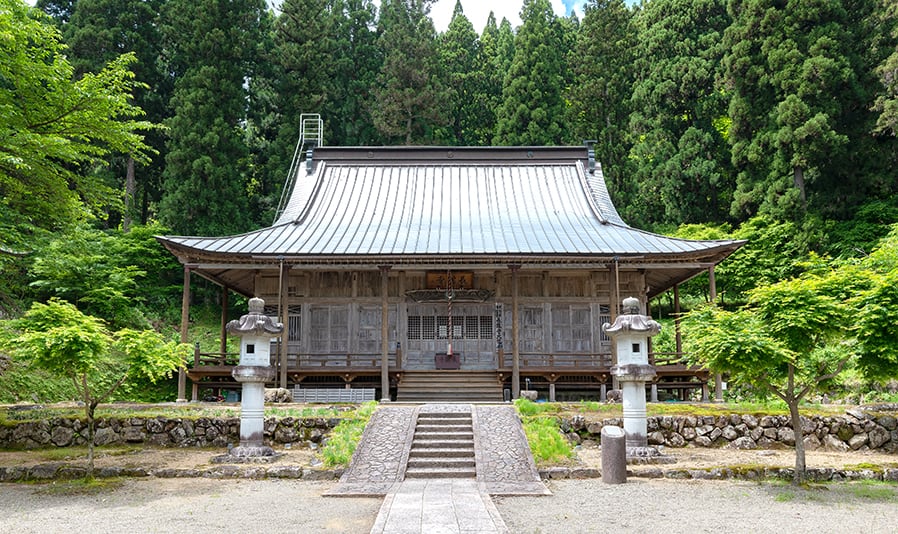
The temple you can see on the left-hand side is Hakusan Choryuji Temple.
Hakusan Culture Museum
The symbol of Hakusan Bunka-no-sato
Knowing Hakusan-shinko and the history of this area!
Hakusan Culture Museum introduces the culture and history of Minobanba. The building is inspired by Mount Hakusan with a triangular roof top. Large screen showing video of Hakusan worship and Important Cultural Properties related to Hakusan-shinko are displayed. An ukiyo-e of waterfall Amidagataki by Katsushika Hokusai can also be found here. Old tools used by people lived at the village on Mount Hakusan are displayed at the hall of history and folk. If you come and learn more about the history and culture of Hakusan, it absolutely richens your trip at Gujo!
* Displays change from time to time.
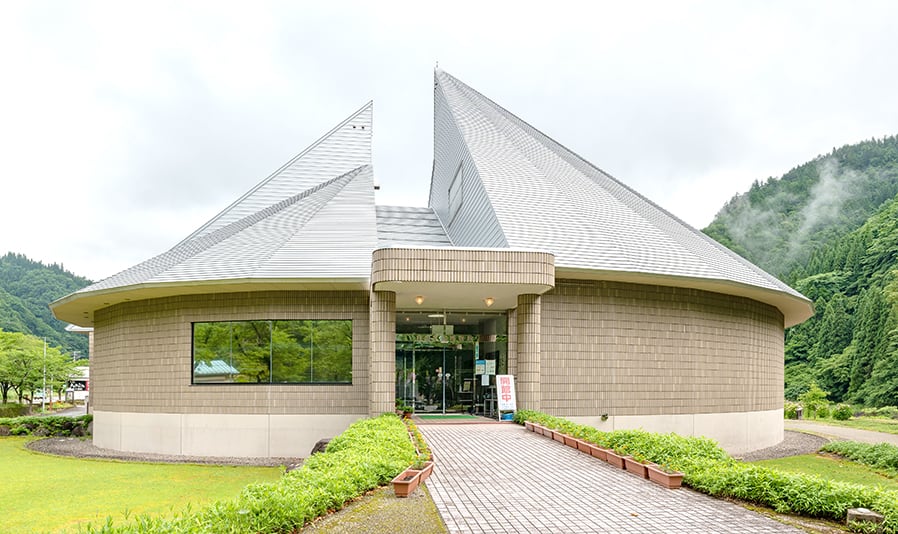
The appearance of this museum is inspired by the three mountains of Hakusan.
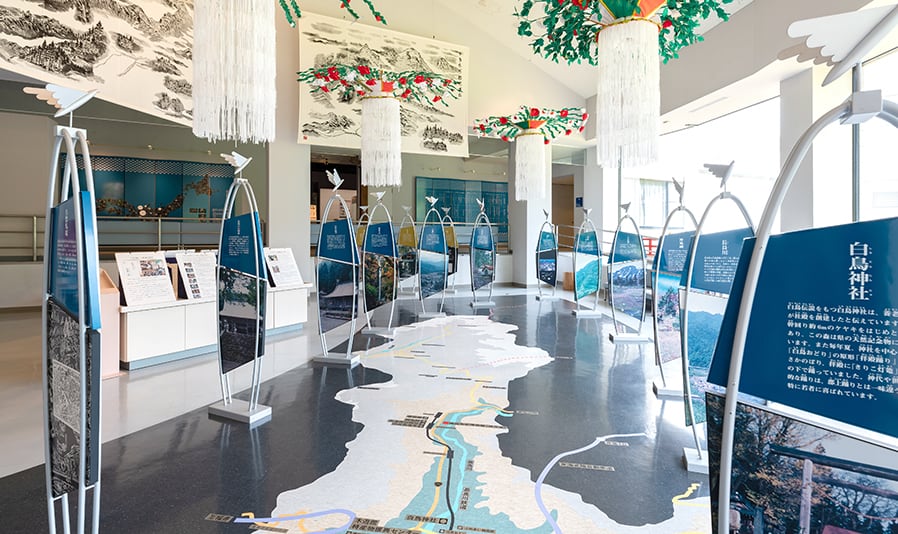
At the information plaza inside the museum, photos of the rivers on Mount Hakusan and the three starting points of ascetic path are introduced.
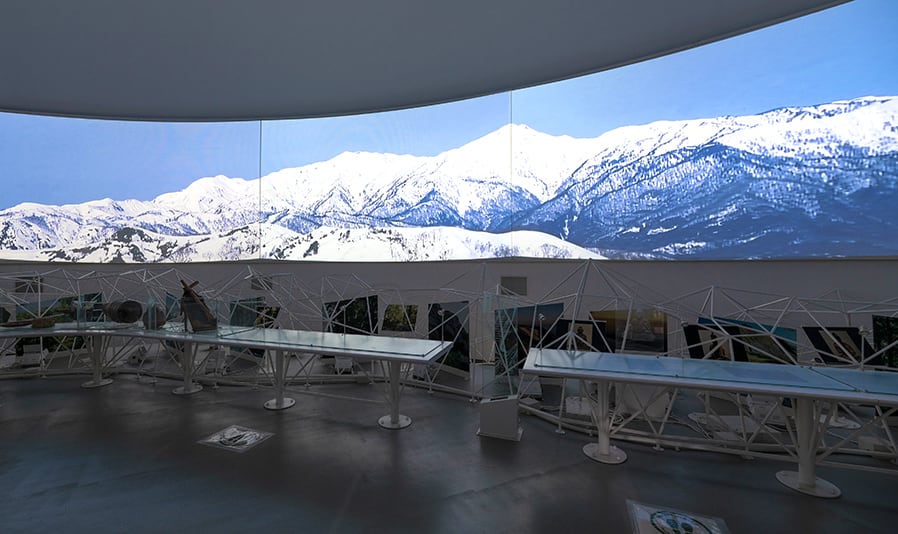
Video showing the attractiveness of Hakusan.
Amidagataki Waterfall
Surrounded by negative ion at this spiritual spot, waterfall Amidagataki
Amidagataki Waterfall is a famous waterfall in Tokai area with a fall of 60 meters and width of 7 meters. It is the origin of Nagaragawa River, which is also the origin of Hakusan, God of Water. Amidagataki is a famous sightseeing spot with fresh greenery and autumn red leaves. From the name Amida, it was a training place of Hakusan-shinko. It was so beautiful that it was also drawn on an Ukiyo-e art piece by Katsushika Hokusai. Water falls into the basin with great power. The greenery along the path towards the basin is also very nice! Negative ion is filling the air making it cooler in summer. Taking a deep breathe is very refreshing! You can see beautiful autumn leaves from late October.
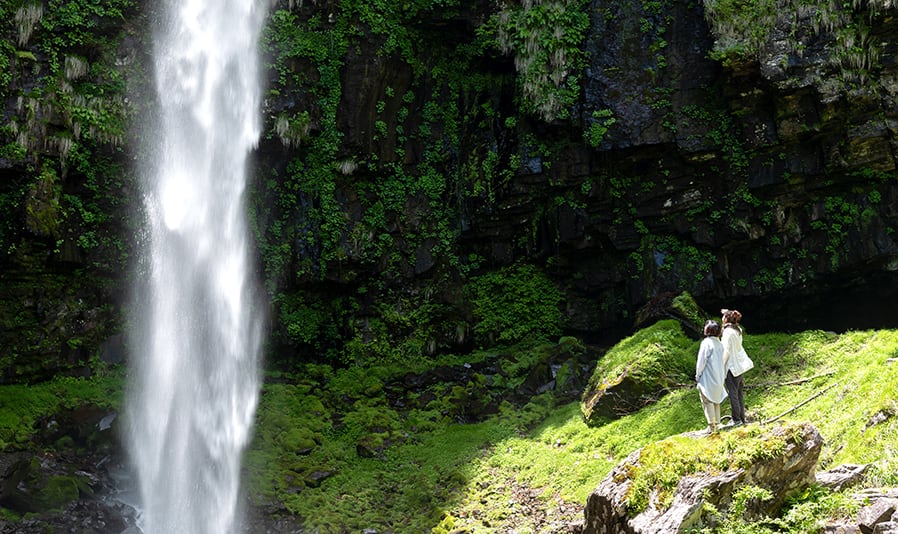
The fall of 60 meters is very powerful making so many splashes of water.
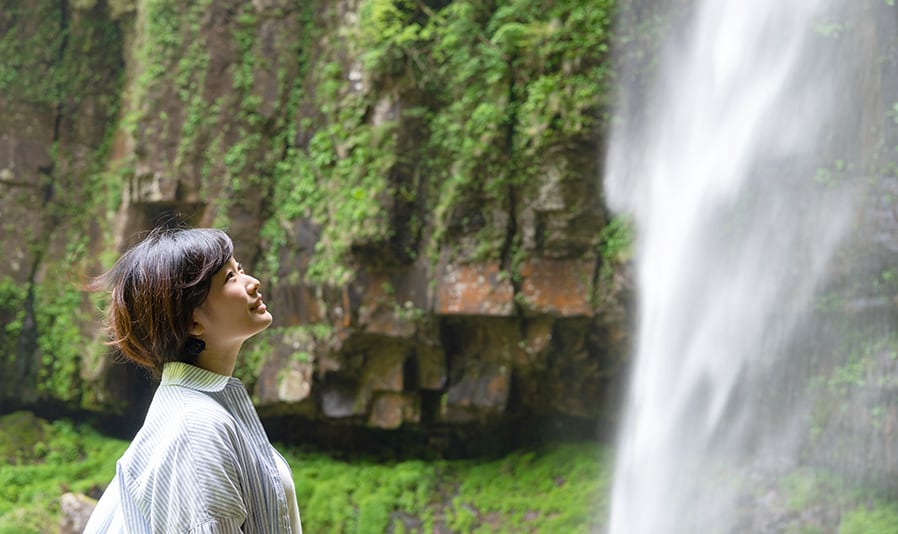
A spiritual spot surrounded by negative ion and cool air in summer.
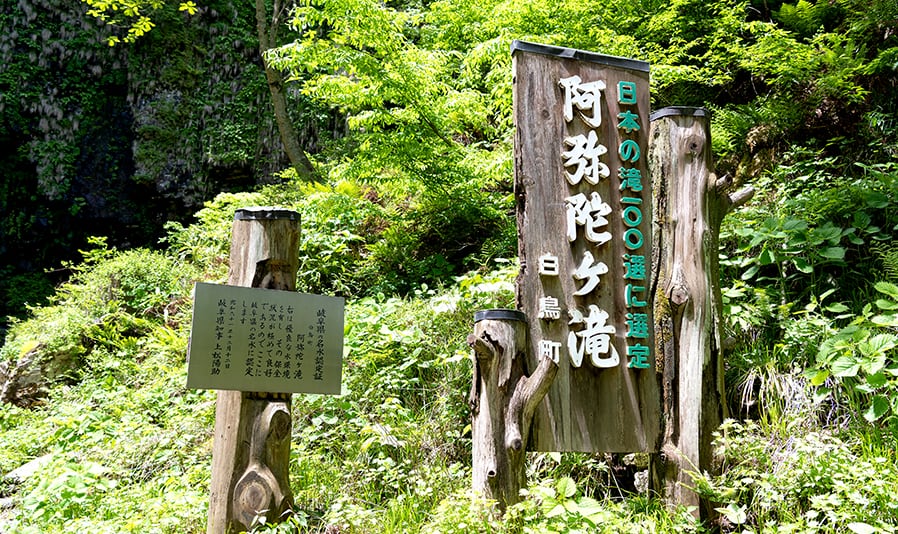
You can walk to the basin through a small path. We recommend you wear sneakers or shoes comfortable for walking.
Thai restaurant “Gujo vegetable and Thai cuisine Tharat”
A Thai restaurant only opens in summer
Vegetable in Gujo and Thai cuisine Tharat
From the parking area of Amidagataki to the waterfall, a Thai restaurant is located in front of a red bridge. Thai cuisine provided here, like homemade green curry, gapao rice and kai yang, uses local Gujo vegetable. The appearance of this restaurant of very cute surrounded by green plants. Buy a drink and walk to the waterfall will be very nice! This restaurant opens from Golden Week (Early May) to late September. Business day varies because of weather. Please check its Facebook page or Instagram before you come. Famous Nagashi-somen (Flowing white noodles) restaurant Amidagataki-so Nagashi-somen is located on the opposite side of the bridge. This area is filling with many visitors in summer.
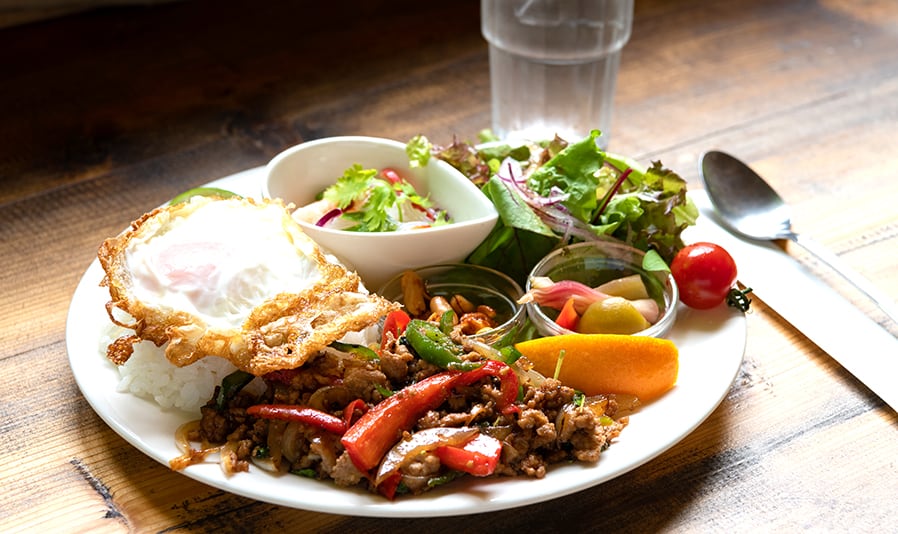
Thai cuisine using local Gujo vegetable.
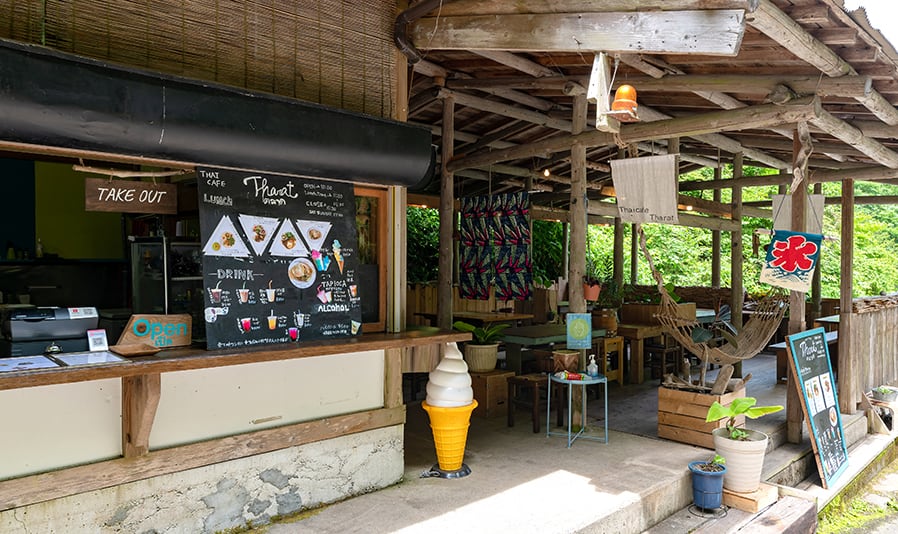
It only opens in summer. Please remember to check their social media before coming.
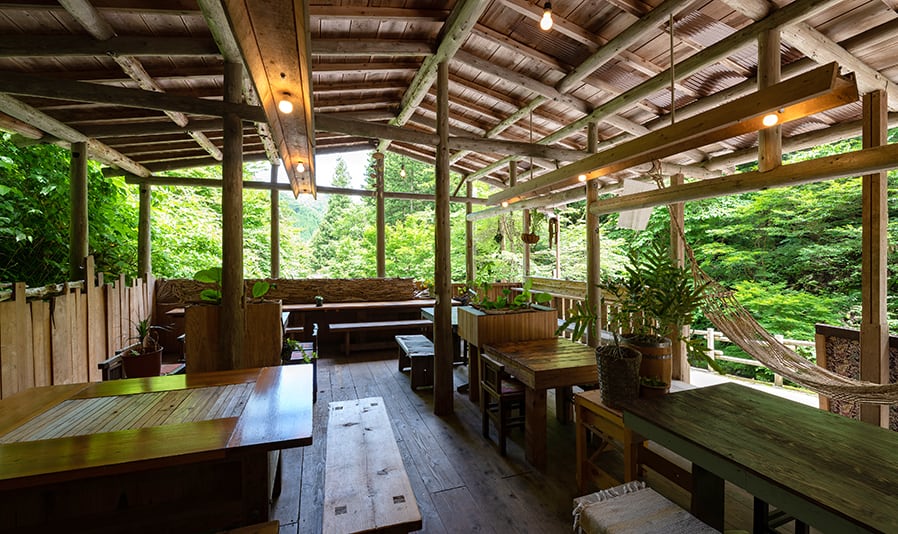
You can feel the wind breeze from seats at the open-aired area.
Hakusan Chukyo-jinja Shrine
Welcome to Itoshiro, the holy area of Hakusan-shinko
Hakusan Chukyo-jinja is a shrine surrounded by around 150 huge cedar trees with age of 200 years old to 1000 years old. It was established in year 82 and recovered by Monk Taicho during Nara era. Two sculptures “Awa ni Uzura (Ears of millet & quails)” and “Ryu to Wakishoji (Dragons on the side-screens)” in front of the main hall were designated as Important Cultural Properties. Cedar trees and virgin beech forest were Natural Monuments of Gifu-ken. Hakusan Chukyo-jinja Hakusan Chukyo Shrine is said to have a great deal of faith from Nobunaga Oda and Ieyasu Tokugawa. This shrine is a very old shrine located on a plateau of altitude around 700m deep inside the mountain seeing Itoshiro village. Local people help protecting this shrine. Visiting this holy area is a refreshing experience.
* Snow around the shrine is deep in winter. Please do not drive with normal tire. Please contact the shrine at 0575-82-5201 in advance if you wish to visit, worship or receive shrine stamp and Omamori (Good luck charms).
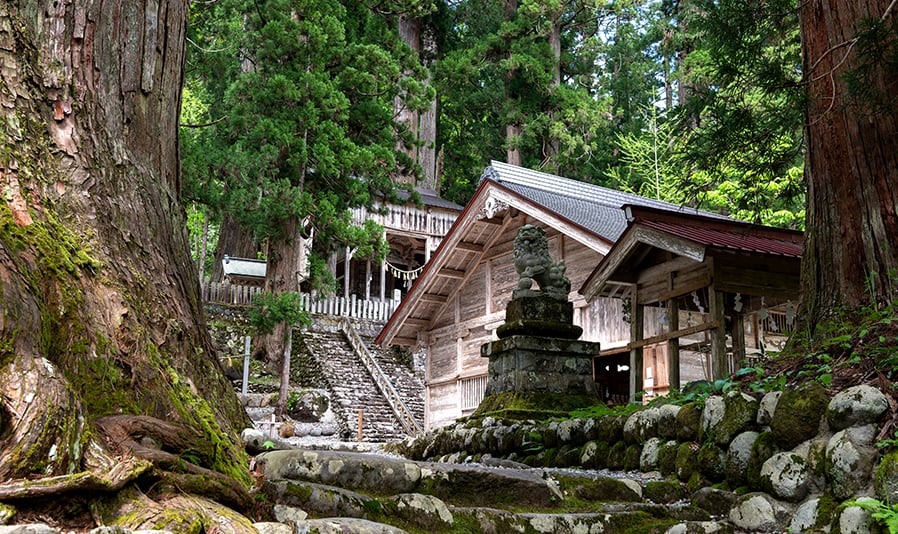
The shrine is surrounded by over 150 trees making the atmosphere very solemn.
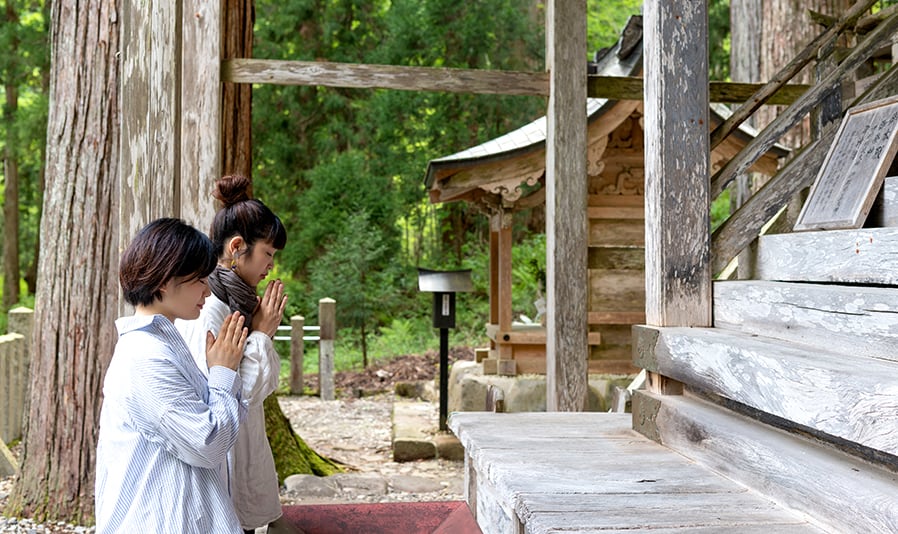
These sculptures in the main shrine were created during Edo era (1603 – 1868). Both are designated as Important Cultural Properties in Gifu-ken.

If you want to get a Goshuin (Seal stamp from shrine), please contact in advance.
Natural Hot Spring Manten-no-yu
One of the famous carbonated simple hot springs
Relaxing at a hot spring to end our trip!
Manten-no-yu located in Shirotori-cho of Gujo-shi is a hot spring on altitude of 1000m. One of the selling points of this hot spring is a large open-aired bath! The scenery from this open-aired bath is brilliant with fresh greenery in spring and summer, red leaves in autumn and snow in winter. The starry night is also very wonderful! Private room with open-aired bath for up to 4 people is available for families or couples. The water is carbonated simple salt hot spring which is transparent. It can remove excess sebum and dead skin making your skin smoother. There are private rooms, Manten-no-yado, which is limited to 8 groups of guests in a day. Having a relaxing trip will be nice here!
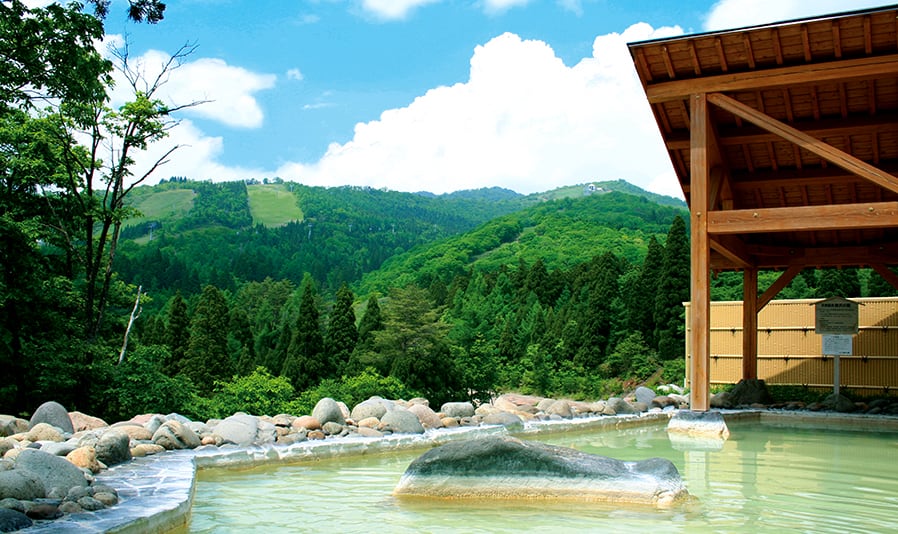
Having a relaxing time while seeing the fresh green mountains.
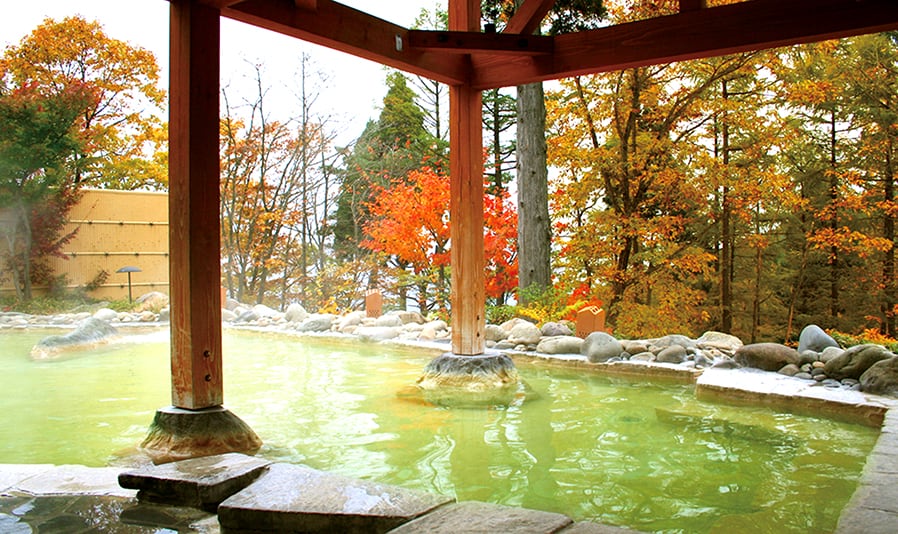
Enjoy your autumn leaves view in a bath.
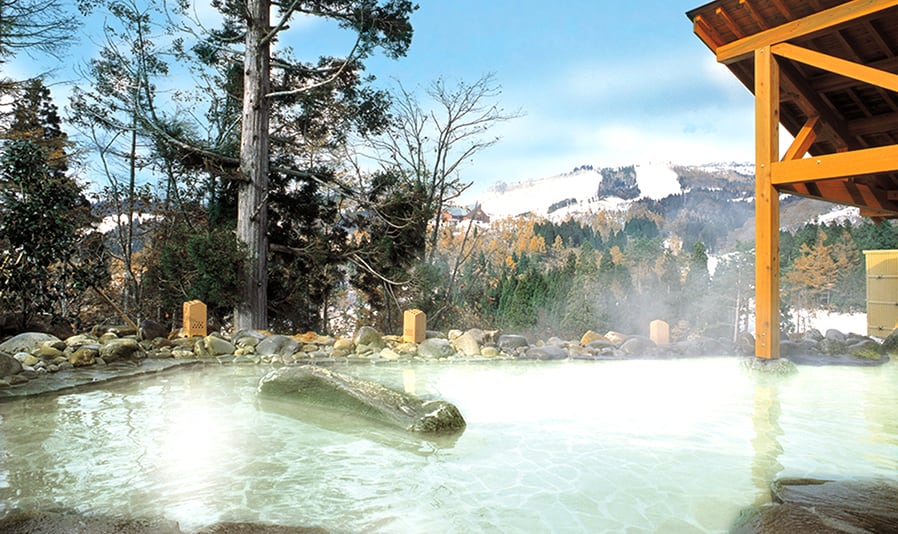
You can enjoy this snowy view in this open-aired bath.


